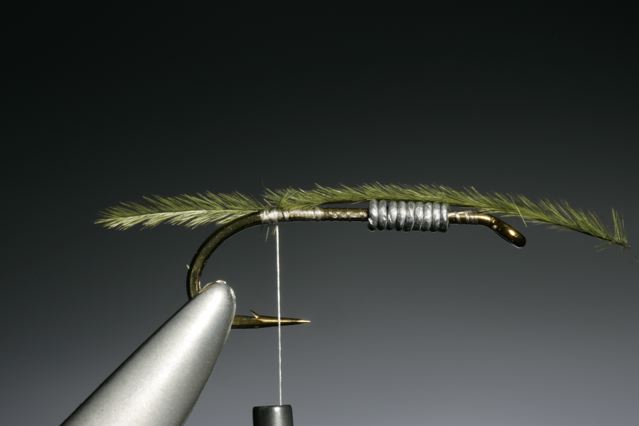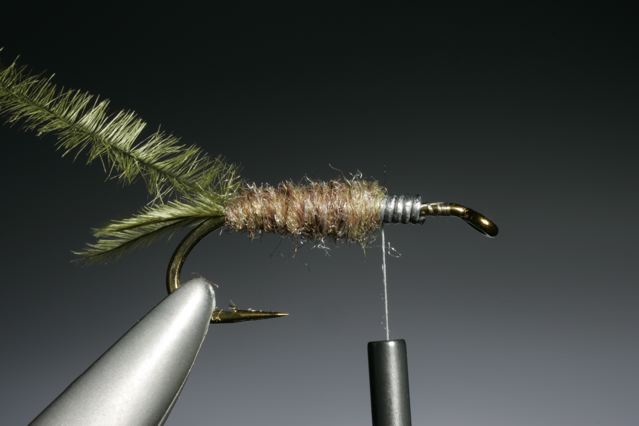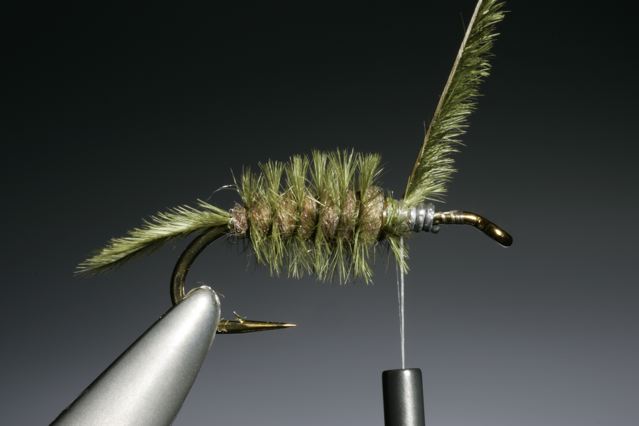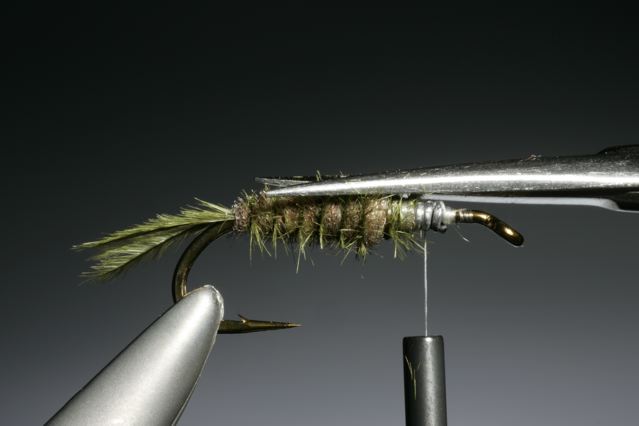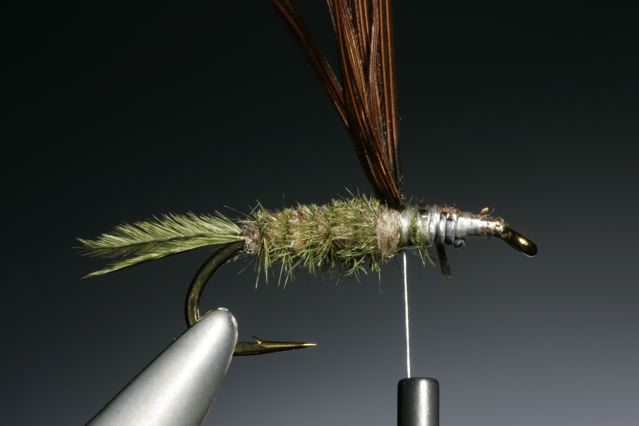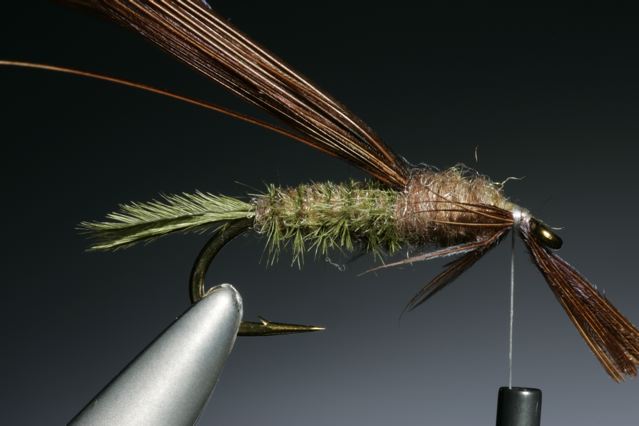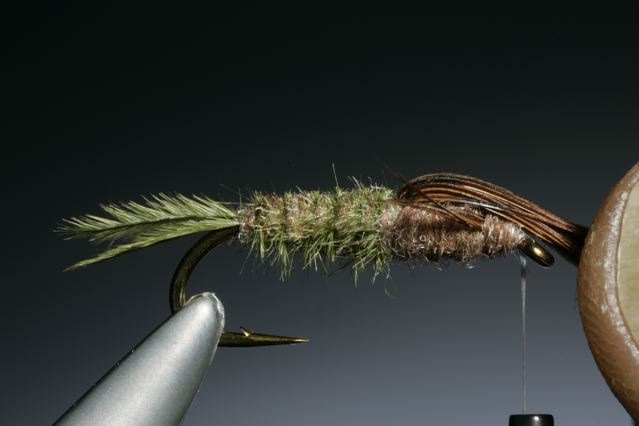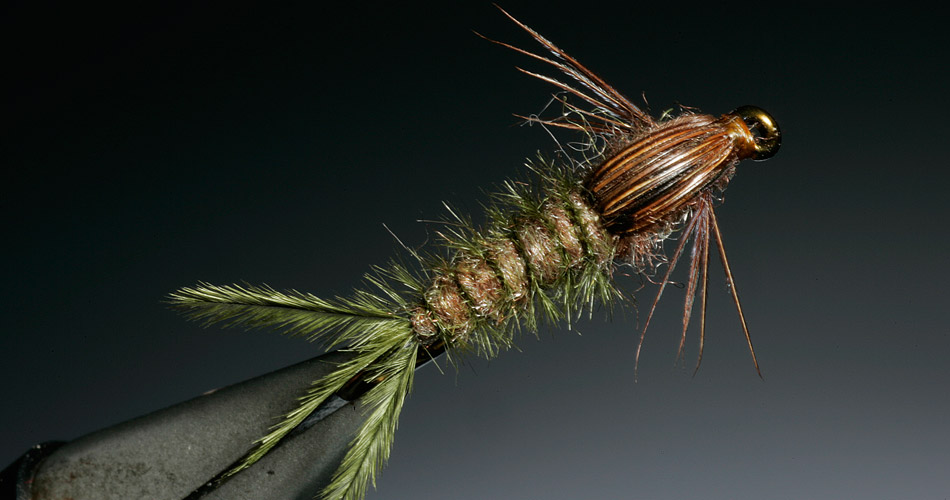This pattern imitates the nymph stage of our two largest mayflies, Ephemera
vulgata, that is most common in lakes, and Ephemera danica, that is most common in slow flowing rivers and streams. These nymphs prefare sandy or muddy bottoms, where they live more or less buried for two to three years. These large nymphs can be reconised by the breathing gills along the sides of the rear body.
Nymph patterns like this one should be weighted, so that they don´t swim up side down in the water, this should be done by tying in two strips of lead wire on the underside of the hook shank. The R73 hook from Mustad that I have used here is so heavy in the bend that it will swim the right way even if you use extra weight under the thorax.
On these large nymphs I prefare to use Golden pheasant as the wing case. These tail feather fibres are tougher than normal ring neck pheasant tails fibres and have a little more shine.
Materials
| Hook | Mustad R73 9671 # 8-12 |
| Tying thread | Dyneema |
| Tail | Olive ostrich herl |
| Body | Olive brown Antron dubbing |
| Rib | Olive Ostrich herl |
| Thorax | Olive brown Antron dubbing |
| Wing Case | Golden pheasant tail |
| Legs | Peasant tail |
Step by Step


